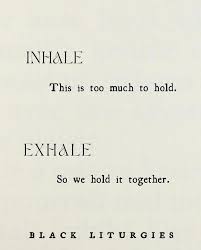Hopefully the series isn’t turning dark but maybe we need to be honest. In nature, parasitism is always a delicate matter. It’s where one organism benefits at the expense of another, ticks on deer or fungus creeping over plants. It’s messy and often damaging if left unchecked. In our churches, parasitism shows up when one community siphons off energy, resources, or leadership from another, without giving anything back.
It’s a quiet, often hidden relationship and at first glance, it may seem mutually beneficial, but over time, the imbalance saps the life from the system. When a fresh expression relies heavily on inherited church resources, be it finances, leadership, or space without sharing or investing in its own growth, it may drift into parasitism and kill the host. At the same time we need to remember that story of Christ is one of death and resurrection so some things need to die well, so there is a gospel tension here.
Leadership must be attentive to boundaries. That’s not about walls, it’s about creating rhythms of renewal where all parts are healthy. Systems thinking teaches us that feedback loops are vital; if one part expends more energy than it reinvests, the entire system risks collapse. Leaders on all sides need to ask: ‘Are we enabling life-giving relationships, or are some parts draining others?’
Shifting from parasitism to health involves honest conversations and clear boundaries around resource sharing and leadership roles. It also involves a culture of accountability, where both old and new expressions pay what they can, contribute their strengths, and recognise their limits.
“Good governance doesn’t focus only on what to do — it emphasizes what not to do. Boundaries protect the system’s integrity and promote resilience.” — Adapted from Heifetz & Linsky, Leadership on the Line.
In practical terms church plant that uses a traditional church’s building for free, but then drains the church’s hospitality team, without sharing in planning or resourcing, risks exhaustion. Leaders must gently reframe this, encouraging mutual investment rather than drain. Healthy mixed ecology churches grow in trust and respect, not dependence or exhaustion.
In the end, parasitism teaches us that boundaries are not barriers but safeguards, protecting life, ensuring that each expression of church can flourish without becoming overly dependent or destructive.

